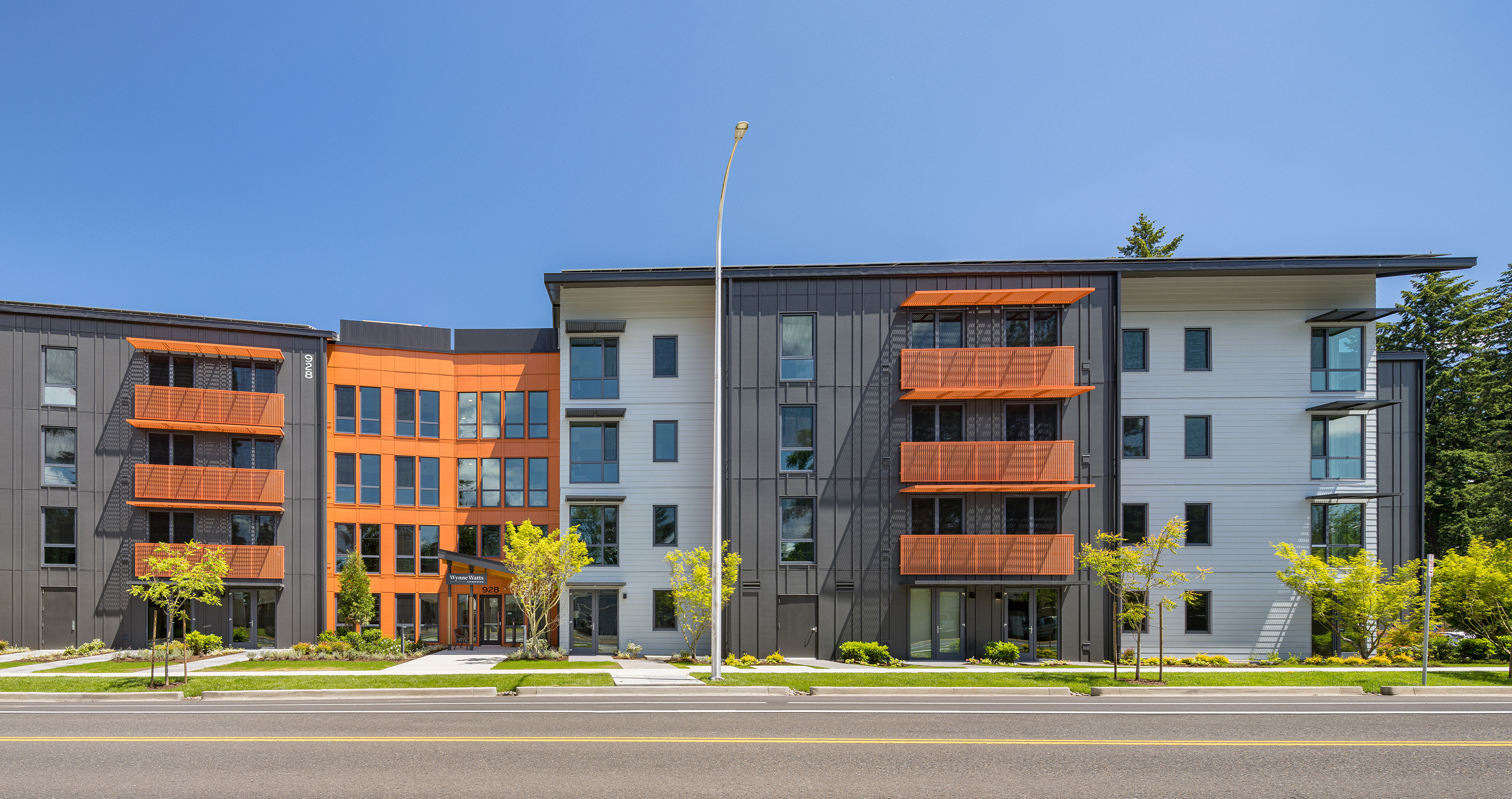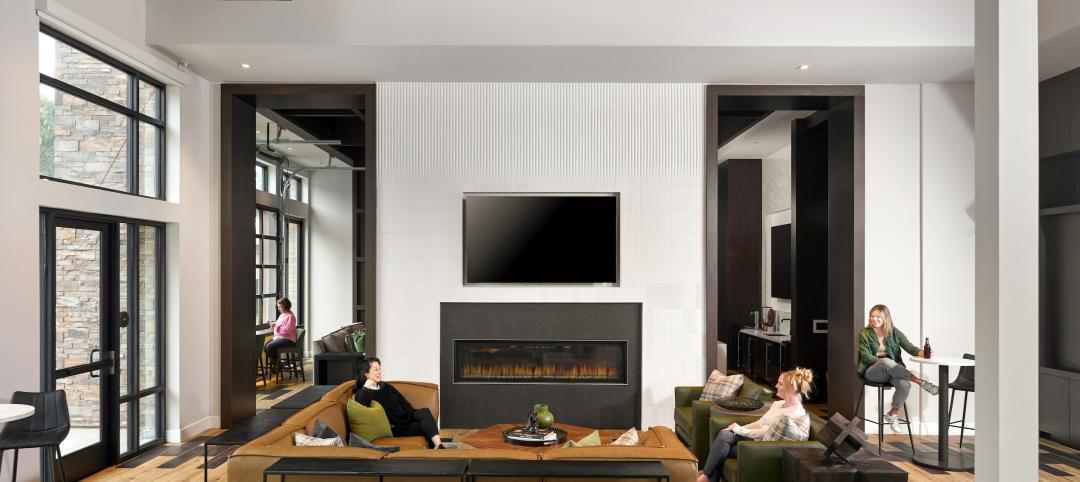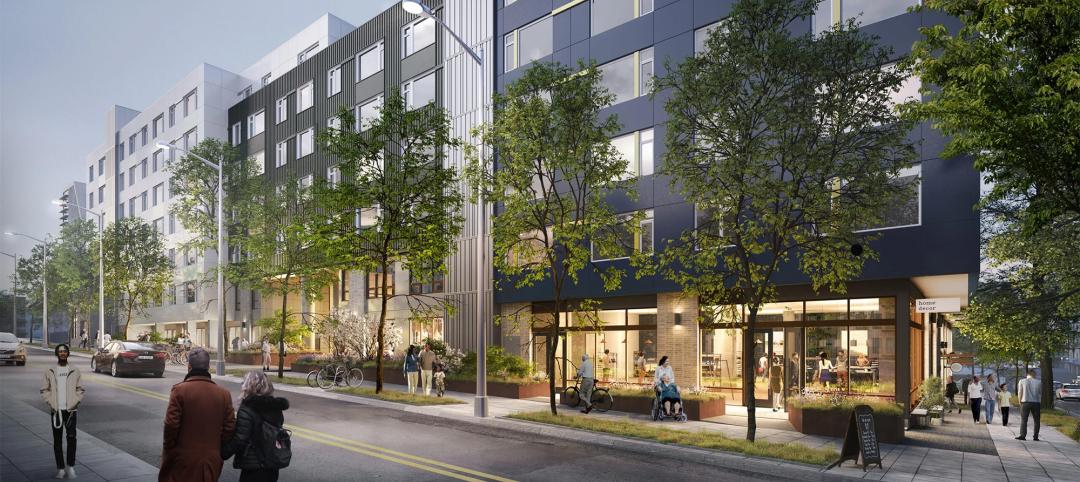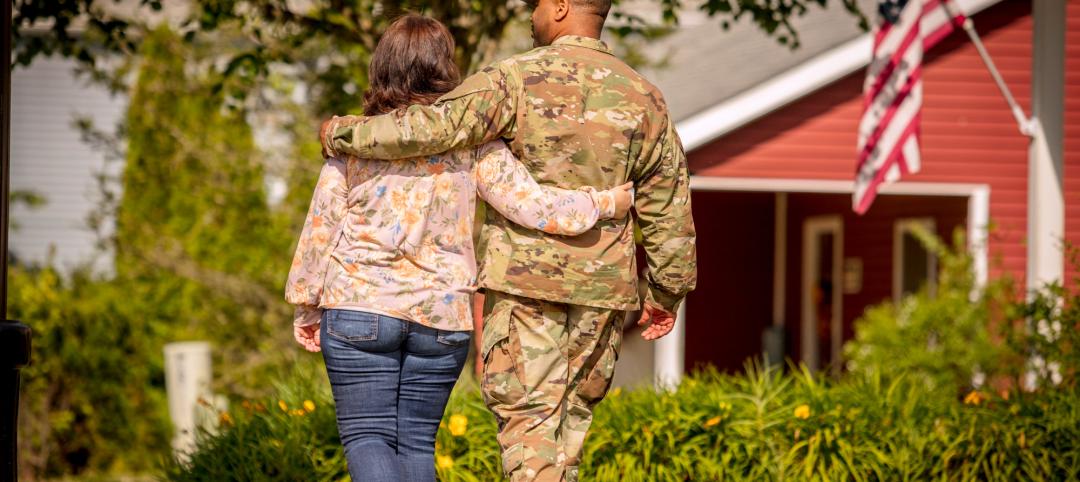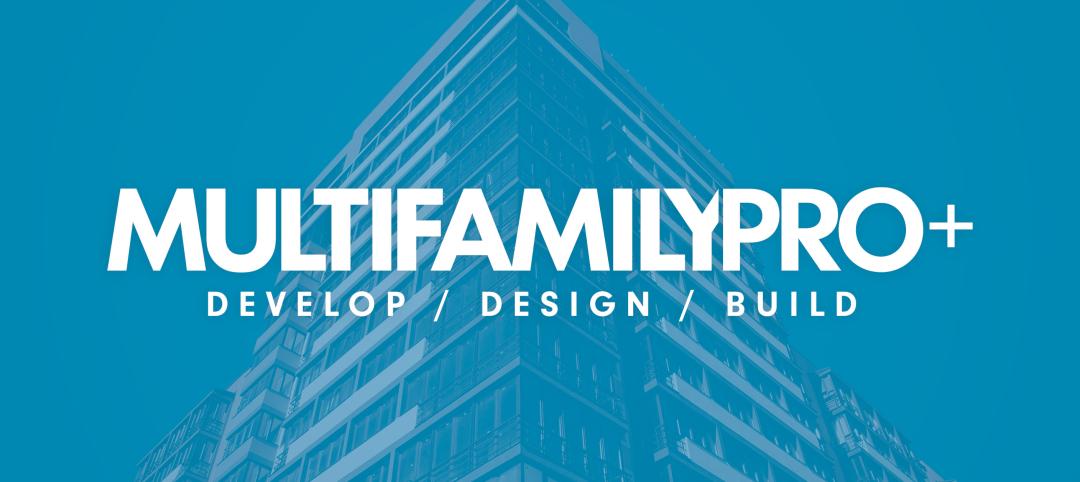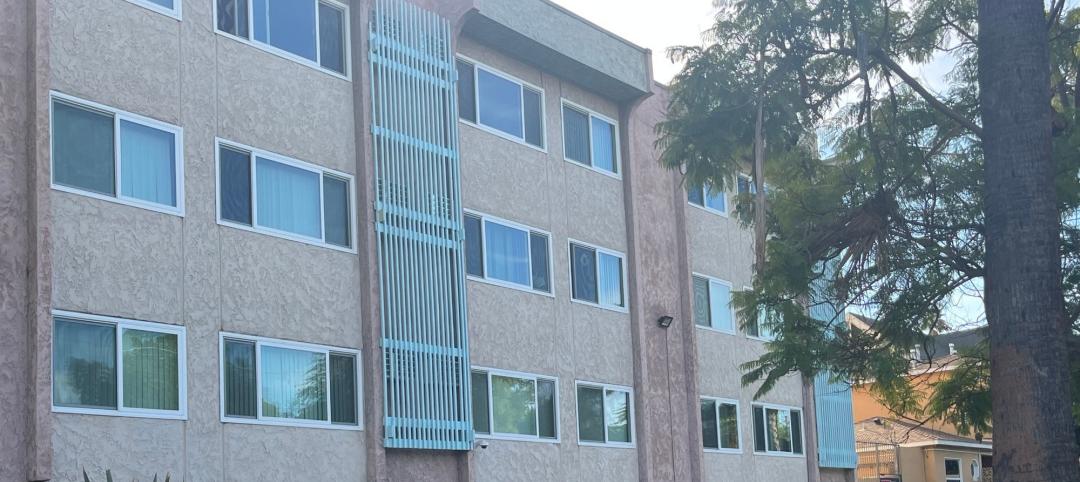In our latest call for entries, Building Design+Construction collected over 20 multifamily projects with a focus on affordable housing. Here are two developments that are PHIUS-certified and built to Passive House standards, and one sustainable project powered entirely by PV solar.
This article is part of BD+C’s 2023 affordable multifamily project roundup. While this article focuses on sustainable developments, other categories include supportive/specialized housing, mixed-use communities, and more. The entire list of projects can be found here.
Fifth & Dinwiddie West
Pittsburgh, Pa.
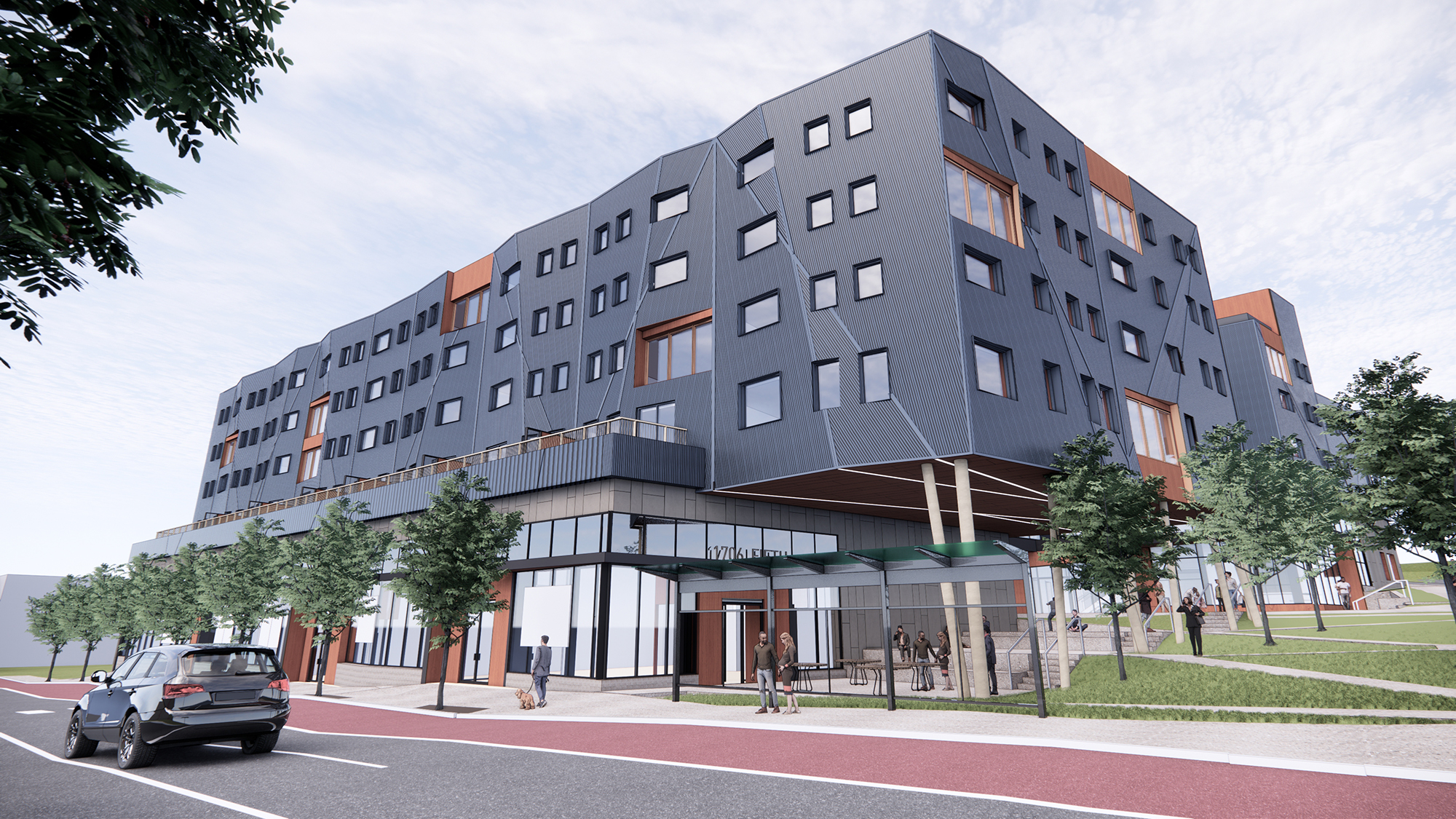
Fifth & Dinwiddie West is slated to be a 190,000-sf mixed-use, mixed-income development in Pittsburgh, Pa. The project is notable for its Passive House design, and is already pre-certified PHIUS. The building’s location and form—two stacks of housing, joined by a pedestrian bridge—create community and transportation hubs. Located next to a Bus Rapid Transit Station, it connects residents to jobs in Downtown and Oakland, Pittsburgh’s two biggest employment centers.
Rather than mimicking its historic context, 5th & Dinwiddie West’s folded façade creates a contemporary contrast that enhances its surroundings. At the same time, the building pays homage to its community with public art celebrating the neighborhood’s rich history of musicians, photographers, and artists.
The building team anticipates a 70% reduction in energy use due to its Passive House design—passing its financial savings to the residents. Twenty percent of the units will be committed to be affordable housing, targeting three levels of income: 2.5% of the units will be for households making at or below 20% of the area’s median income (AMI), 7.5% of the units will be for households at or below 50% AMI, and another 10% of the units will be for households at or below 60% AMI with the intention of creating an integrated neighborhood community within the building.
On the Building Team:
Developer/Owner: Bridging the Gap Development
General Contractor: Rycon
Architect: GBBN Architects
Passive House Consultant: Auros Group
MEP/Civil/Structural Engineer: MBI (Michael Baker International)
Landscape Architect: evolveEA
Offsite Panel System Fabrication: Blueprint Robotics

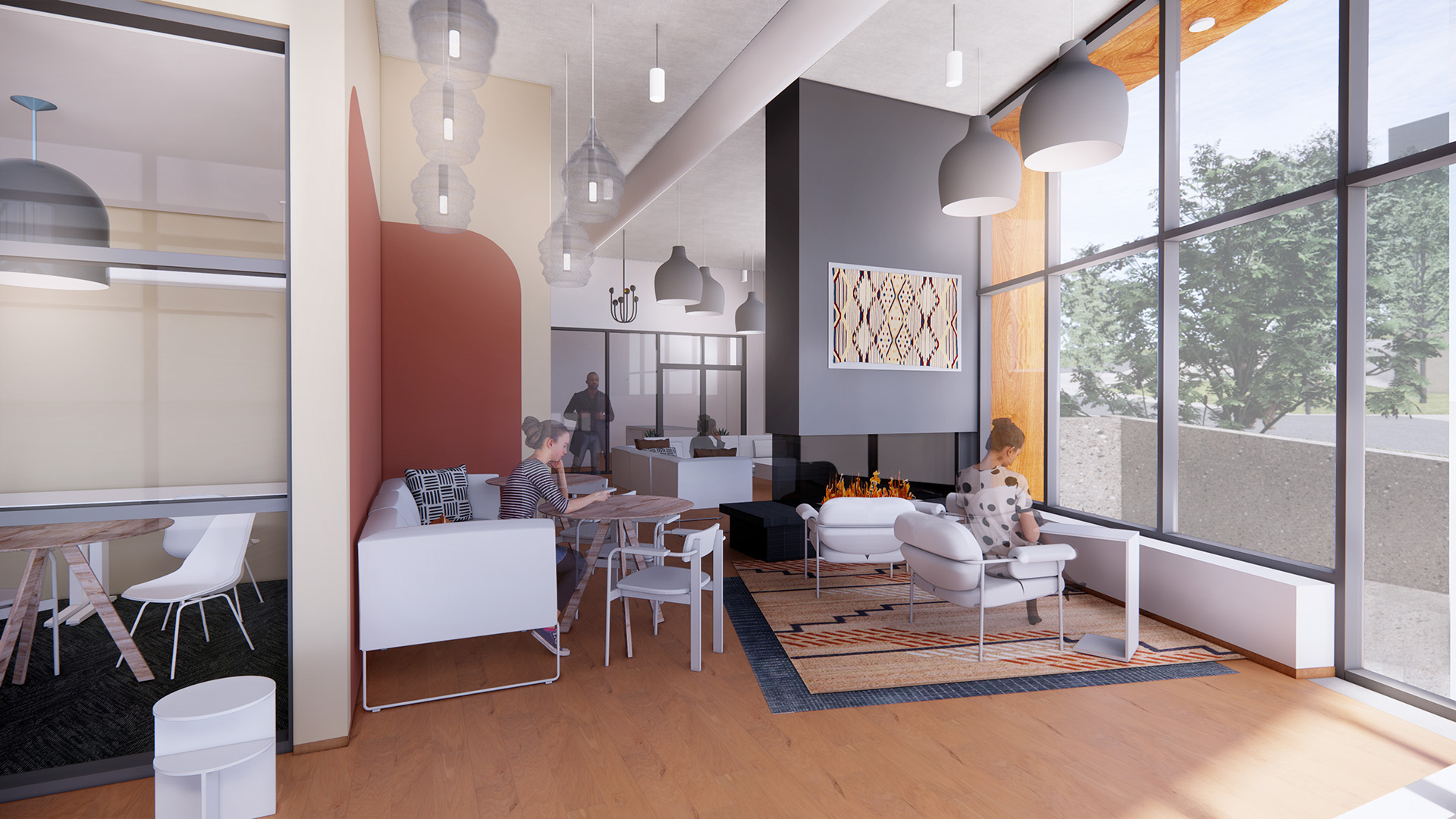
425 Grand Concourse
Bronx, N.Y.
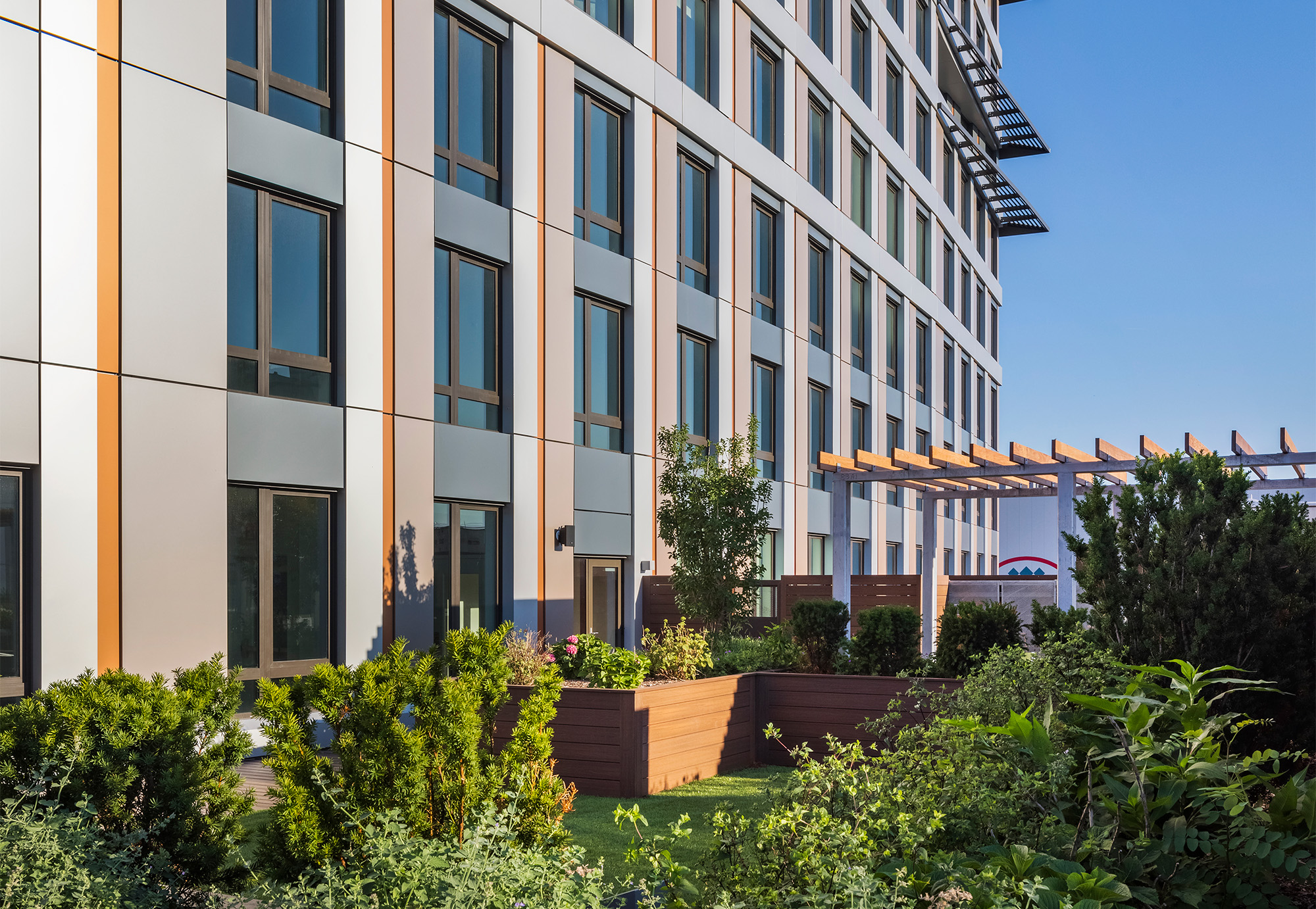
425 Grand Concourse, located in the Bronx, N.Y., is the largest Passive House project in North America to date. At 300,000 sf, Grand Concourse contains 277 affordable housing units (on an income tier basis), a medical facility, supermarket, community support space, and a new student services center for CUNY Hostos, the public community college.
The mixed-use development includes approximately 1,000 REHAU uPVC windows designed to meet PHIUS thermal goals. Built to Passive House standards, the building will consume up to 70% less energy than conventional housing projects, according to the project team. Grand Concourse provides a model for healthy living environments in a district with one of the worst childhood asthma rates in the country (due to high air pollution from heavy traffic and nearby waste transfer stations). Its PHIUS-certified design minimizes the release of harmful, asthma-triggering combustion gasses for tenants.
The building offers residents a wide variety of amenities including a recreation room, landscaped roof terrace, a lounge space, fitness room, laundry rooms, and bike storage. An additional benefit to the tenants at 425 Grand Concourse is that as a part of the development, an online “dashboard” was designed by Bright Power so tenants can—in real-time—review their current energy consumption and compare it with the average building readings.
On the Building Team:
Developer: Trinity Financial and MBD Community Housing Corporation
General Contractor: Monadnock Construction
Architect: Dattner Architects
MEP: Dagher Engineering
Passive House Consultant: Steven Winter Associates, Inc.
Window Manufacturer: Starr Windows & Doors, Inc.
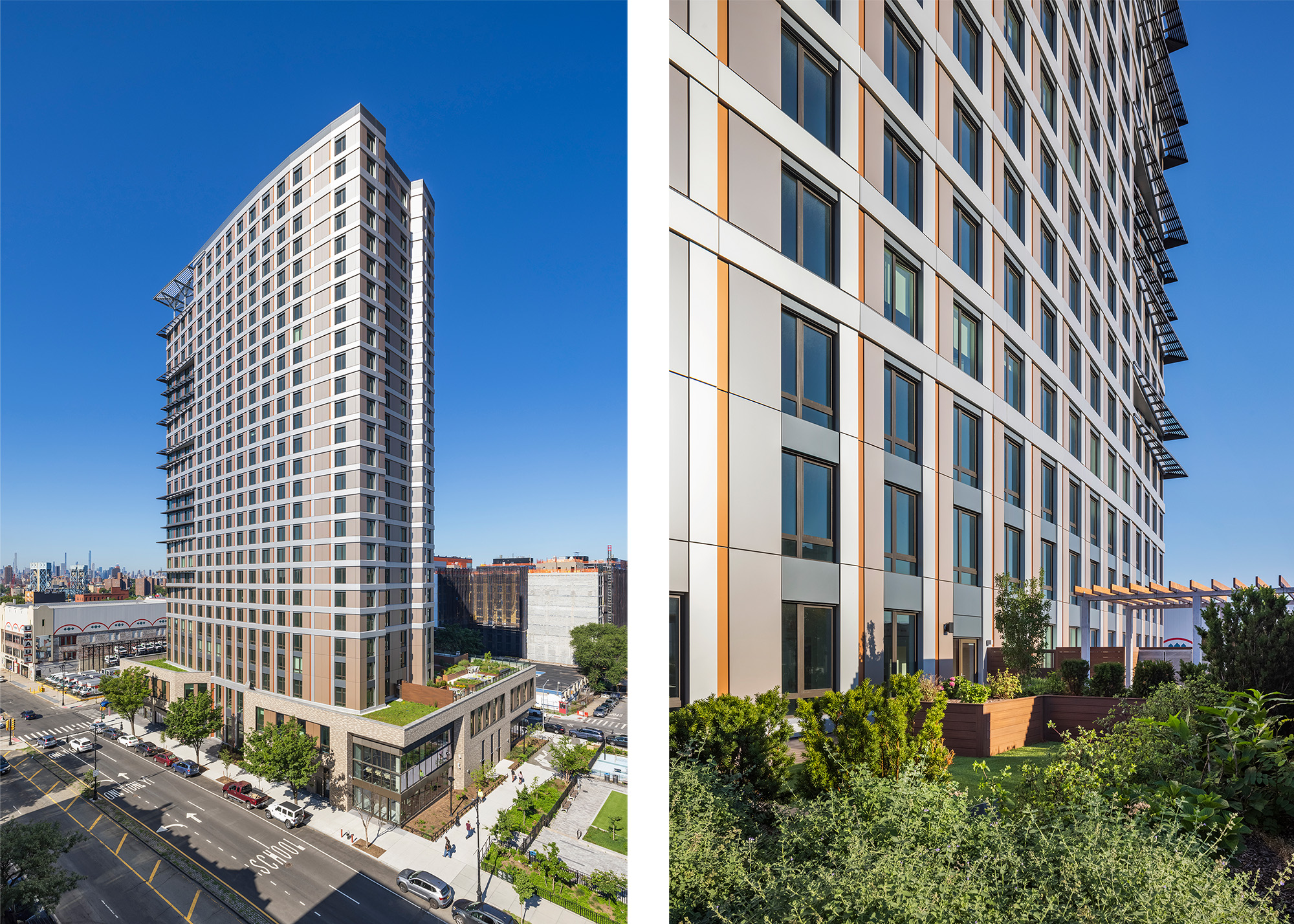
Wynne Watts Commons
Gresham, Ore.
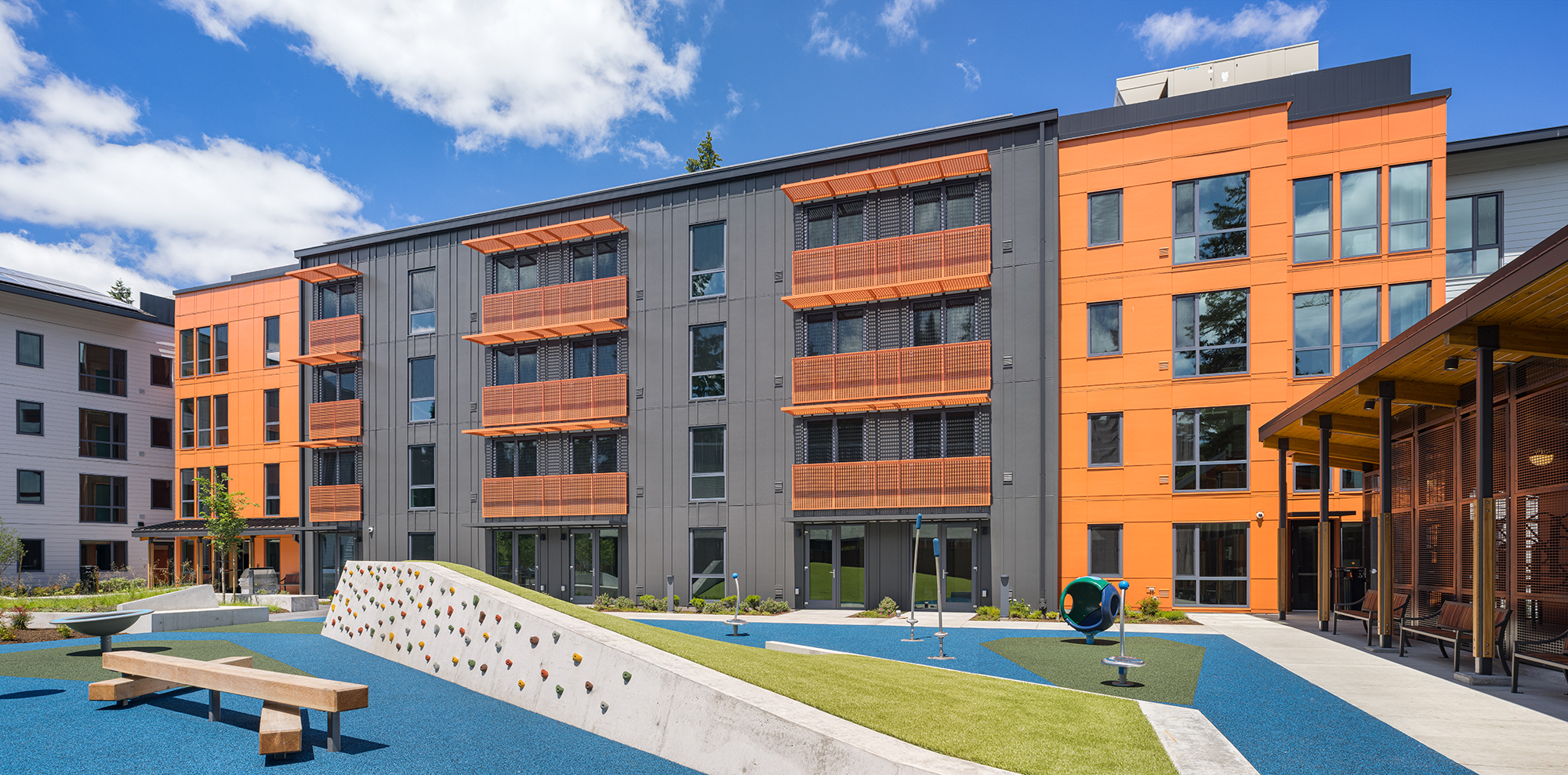
Wynne Watts Commons marries accessibility and sustainability in a 97,000-sf shell. Though it’s not a PHIUS-certified building, it’s the largest Net Zero Energy affordable housing project in the Pacific Northwest (and among only several nationwide). It’s fully powered by solar panels, which provide enough renewable energy to operate the entire building with no utility costs for residents.
The project holds a total of 150 units, including 30 universally accessible apartments for adults with intellectual and developmental disabilities (I/DD). Albertina Kerr, a mission-based nonprofit, spearheaded the creation of this community in order to serve people experiencing IDDs, mental health challenges, and other social barriers both as outpatients and residents in Kerr housing. In addition to the 30 units reserved for people making less than 30% of the area’s median income, 102 are set aside for families earning less than 60% of the AMI, and 15 units are designated for families making under 80% AMI.
Wynne Watts’ living spaces feature design modifications that increase the health and safety of its tenants. Hands-free unit elevators, entry operations, and motorized upper kitchen cabinets provide access for tenants with limited mobility, in addition to voice-control systems for lighting and blinds. More accessible specializations include pull-out stovetops, clothing shelving systems, and environmental controls that integrate adjustable color lighting.
On the Building Team:
Owner: Albertina Kerr
Developer: Edlen & Co
General Contractor: Pence Construction
Architect: Ankrom Moisan Architects
Net Zero Consultant: Green Hammer Design Build
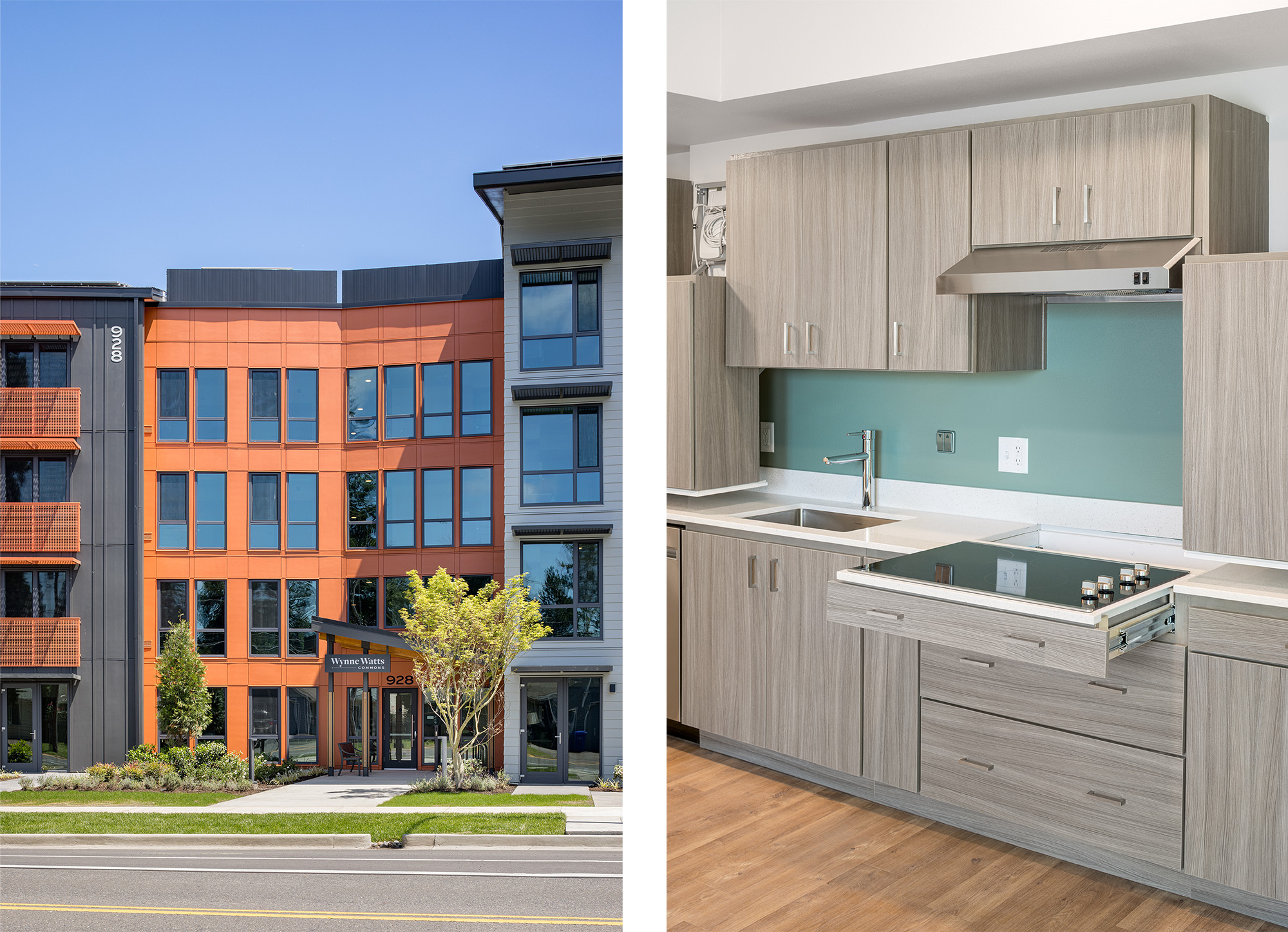
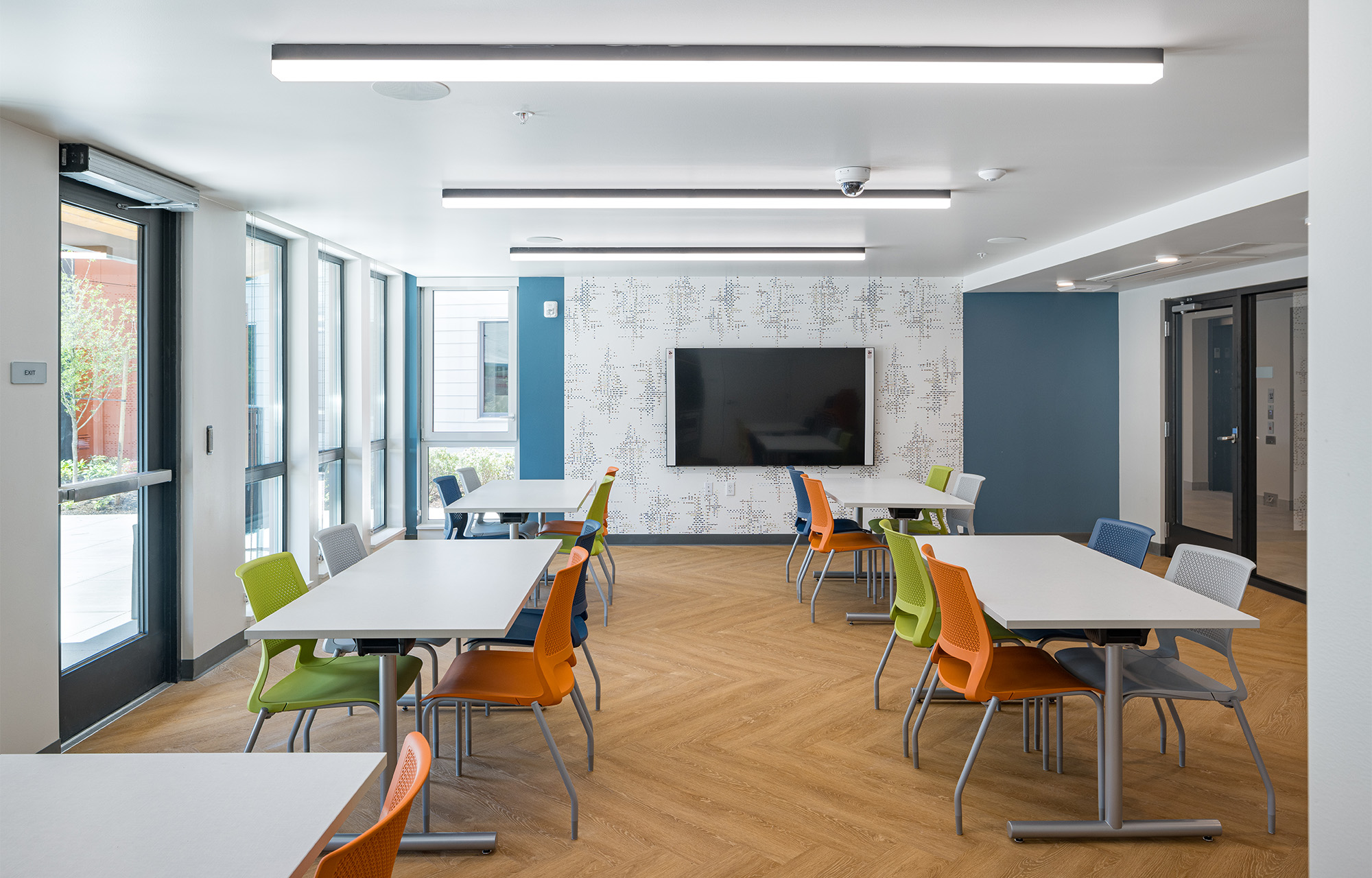
Related Stories
Giants 400 | Oct 23, 2023
Top 190 Multifamily Architecture Firms for 2023
Humphreys and Partners, Gensler, Solomon Cordwell Buenz, Niles Bolton Associates, and AO top the ranking of the nation's largest multifamily housing sector architecture and architecture/engineering (AE) firms for 2023, as reported in Building Design+Construction's 2023 Giants 400 Report. Note: This ranking factors revenue for all multifamily buildings work, including apartments, condominiums, student housing facilities, and senior living facilities.
Affordable Housing | Oct 20, 2023
Cracking the code of affordable housing
Perkins Eastman's affordable housing projects show how designers can help to advance the conversation of affordable housing.
Affordable Housing | Oct 10, 2023
Lendlease expands military housing nation-wide with Cadence Communities
Lendlease announced today it has closed ground leases at seven U.S. Army installations, which together establish the new Cadence Communities portfolio.
MFPRO+ News | Oct 6, 2023
Announcing MultifamilyPro+
BD+C has served the multifamily design and construction sector for more than 60 years, and now we're introducing a central hub within BDCnetwork.com for all things multifamily.
Affordable Housing | Oct 3, 2023
Standard Communities acquires six 100% affordable housing communities
These affordable housing communities total 407 units, and five of the communities are dedicated to senior living.
Multifamily Housing | Sep 26, 2023
Midwest metros see greatest rent increase in September 2023
While the median monthly price of rent has increased by 0.71% in August, the year-over-year estimates show a national change of -0.06 percent.
Affordable Housing | Sep 25, 2023
3 affordable housing projects that serve as social catalysts
Trish Donnally, Associate Principal, Perkins Eastman, shares insights from three transformative affordable housing projects.
MFPRO+ Blog | Sep 21, 2023
The benefits of strategic multifamily housing repositioning
With the rapid increase in new multifamily housing developments, owners of existing assets face increasing competition. As their assets age and the number of new developments increases seemingly day-by-day, developers will inevitably have to find a way to stay relevant.
Mixed-Use | Sep 20, 2023
Tampa Bay Rays, Hines finalize deal for a stadium-anchored multiuse district in St. Petersburg, Fla.
The Tampa Bay Rays Major League Baseball team announced that it has reached an agreement with St. Petersburg and Pinellas County on a $6.5 billion, 86-acre mixed-use development that will include a new 30,000-seat ballpark and an array of office, housing, hotel, retail, and restaurant space totaling 8 million sf.
MFPRO+ Research | Sep 11, 2023
Conversions of multifamily dwellings to ‘mansions’ leading to dwindling affordable stock
Small multifamily homes have historically provided inexpensive housing for renters and buyers, but developers have converted many of them in recent decades into larger, single-family units. This has worsened the affordable housing crisis, say researchers.


